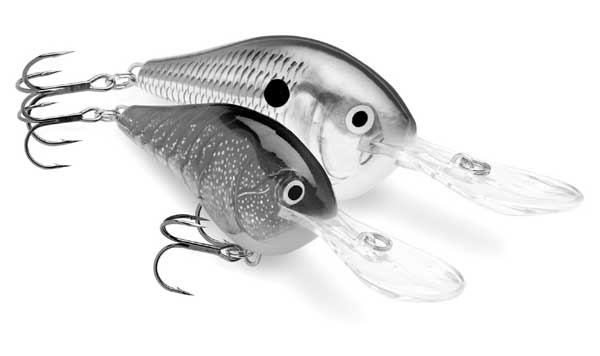
T-John Thompson’s hunting tenacity resulted in the buck of a lifetime last season.
Hitting the strike zone is what it’s all about in bass fishing, whether an angler is working cypress trees and knees in less than 3 feet of water or probing ridges or points in 10 feet of water or deeper.
The strike zone is an area where the bass should be and where the angler wants his artificial lure to meet them, hopefully triggering a bite that leads to a hookset that leads to a fight that either the angler or the fish wins.
The importance of the strike zone isn’t lost on pro bass fishermen such as David Fritts of Lexington, N.C., whose success on the tournament trail hinges on getting his presentation to fish. Much of the time he uses and catches bass on a crankbait, and some crankbaits on the market leave a lot to be desired as far as staying in the strike zone between 10- and 16-foot depths.
You know what he means: There’s the cast, the crankbait hits the water, dives to a certain depth and starts up generally in a sharp “U” pattern back to the fishing rod. Often it doesn’t ride along the bottom of the “U” very long.
Fritts said he corrected that shortcoming by designing a crankbait to get in the strike zone and stay there. It is Rapala’s new DT (Dives-To) Series of crankbaits made to dive faster and remain in the strike zone longer than any other crankbaits on the market, according to Fritts.
The North Carolina bass fisherman is very proud of his creations — the DT 10 and the DT 16. He exudes confidence.
With summer patterns approaching, and deep water cranking one of the most effective ways to boat bass (see related Toledo Bend column in this issue), these crankbaits fit the bill, he said.
“Most crankbaits don’t stay in the strike zone long enough to give you a chance to catch fish — most reach less than 25 percent of the strike zone for the distance they’re cast,” he said recently. “But the DT Series gets down deep and stays there for almost the entire length of the retrieve.”
He said the crankbaits were designed for precision fishing with all of the details only a professional angler could know. To help reach its goal, a thin polycarbonate lip drives the DT Series into the water and quickly moves it into the desired strike zone depth, he said.
Fritts also noted that he designed the crankbaits with carefully positioned internal weights, a tapered fuselage and a thin tail to create the best crankbait action. The DT 10s and DT 16s move side-to-side with an internal rattle making a rhythmic sound inside the balsa wood that fish apparently can’t resist.
The accomplished bass angler pointed out that for the depths they dive, the crankbaits are the smallest in their class. Their balance and weight are reasons the DT 10s and DT16s cast farther than other crankbaits in their class (150 feet is within reach), said the angler who has won more than 50 tournaments while fishing FLW, Red Man and BASS events.
And another factor in their favor, he said, is the crankbaits pull easily through the water during the retrieve and won’t wear out an angler. For anglers faced with a day of cranking, that’s welcome news.
Mark Fisher of Minneapolis, who heads Rapala’s pro staff, echoed the sentiment.
“Rapala lures are world-renowned for being the most well-crafted, productive balsa lures on the market. With the new DT Series, Rapala is offering freshwater anglers the very best of the best,” he said.
Rapala, which offers fishing products to anglers in more than 130 countries, was founded unofficially in 1936 when Lauri Rapala invented the Rapala fishing lure. The name has become synonymous with quality and craftsmanship throughout its line.
The Rapala design team has created a wide range of color patterns for the DT Series, with 12 distinct patterns to pick, Fritts said.
For more information on DT 10s and DT 16s, log on to www.rapala.com.


